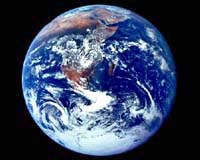
 |
Although flood waters were starting to recede in hard-hit northeastern India, the situation was worsening in parts of Bangladesh where tens of thousands were stranded, some perched on banana-tree rafts or roof tops.
Around 12 million people in India and 30 million in Bangladesh have either been marooned or made homeless by the floods which began with the arrival of the annual monsoon rains mid-June, according to officials in the two countries.
The number of people dead or missing from the flooding stands at 535 in India, 285 in Bangladesh, 86 in Nepal, 16 in Afghanistan and three in Bhutan, according to an AFP tally based on official figures.
Media reports say the toll may be far higher.
The flooding killed 83 people at the weekend in low-lying Bangladesh, two-thirds of which has been submerged with half of the capital Dhaka partly or completely flooded, according to officials.
Villagers in central Kishorganj district told the official news agency BSS the flooding in their area was the worst in living memory.
"It looks like a vast sea as far as the eye (can see) with trees or rooftops making their appearance at some places amid the waves," an official in the eastern Brahmanbaria district told the agency.
In inundated Dhaka 124,000 people were forced to take shelter in emergency relief centres, city officials said. Boats had replaced rickshaws as the main means of transport and the sewerage system had collapsed, creating a risk to public health, BSS said.
"The flood situation in the district of Dhaka will deteriorate further," a Flood Warning Centre bulletin said.
Officials warned that stagnant floodwater polluted with raw sewage could lead to outbreaks of water-borne diseases such as dysentery, typhoid and cholera.
A lack of access to clean drinking water has already caused outbreaks of diarrhoea, they said.
More than 3,500 mobile medical teams have been deployed across the country to help curb outbreaks of water-borne diseases, BSS said.
The flooding is the heaviest in Bangladesh since 1998 it was hit by its worst-ever floods which left more than 700 people dead and 21 million homeless.
Every year Bangladesh, a country of 140 million people criss-crossed by 230 rivers including several major arteries carrying melting snow from the Himalayas, sees flooding that affects at least a fifth of the country.
Officials say that as flood water disperses in northeastern India it moves downstream, causing flooding in central Bangladesh before eventually emptying into the Bay of Bengal.
In India, the death toll from the flooding has risen sharply to 535 as villagers in areas cut off for two weeks have started to report deaths.
Many villagers said adequate relief supplies had still not reached them.
"When in distress, we are forced to give dirty floodwater to our children. We heard that something called halogen tablets (water purifying tablets) have reached the state, but where are they?" asked Sreemanta Das in India's northeastern Assam state.
Assam chief minister Tarun Gogoi said officials were working to send baby food, water purification tablets and medical supplies to flood-hit areas.
"Efforts are on at a war-footing. But when in this kind of a devastating flood we understand we cannot satisfy each and every affected family or village," the chief minister said.
strs-har/bp/br
TERRA.WIRE |